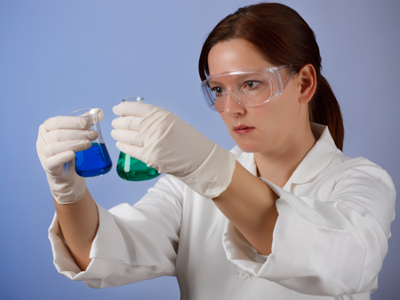

Rates of Reaction 3
Many factors affect rates of chemical reactions - pressure of gases, temperature, surface area of solids, concentration and if there is a catalyst. Anything that will change the probability of particles colliding or change the energy of the collisions will affect the rate of a reaction. This is the last of three GCSE Chemistry quizzes looking at these factors.
When investigating rates of reaction, it is necessary to make a series of measurements over a period of time, for example, how much hydrogen is produced during the reaction of an acid with zinc. The experiment should be repeated several times and, after discarding any anomalous results, the readings averaged and plotted on a scatter graph with time along the horizontal axis. The line of best fit will usually be a curve, with the steepest gradient at the start indicating the fastest rate of reaction. Where the curve is horizontal, is shows that the reaction had finished. The conditions of the experiment can then be changed and the whole process repeated. Plotting the results on the same graph, using different colours, gives a quick and easy visual interpretation, from which you can write your conclusion.
Ready for more?
not all...
quizzers. Try to win a coveted spot on our Hall of Fame Page.






